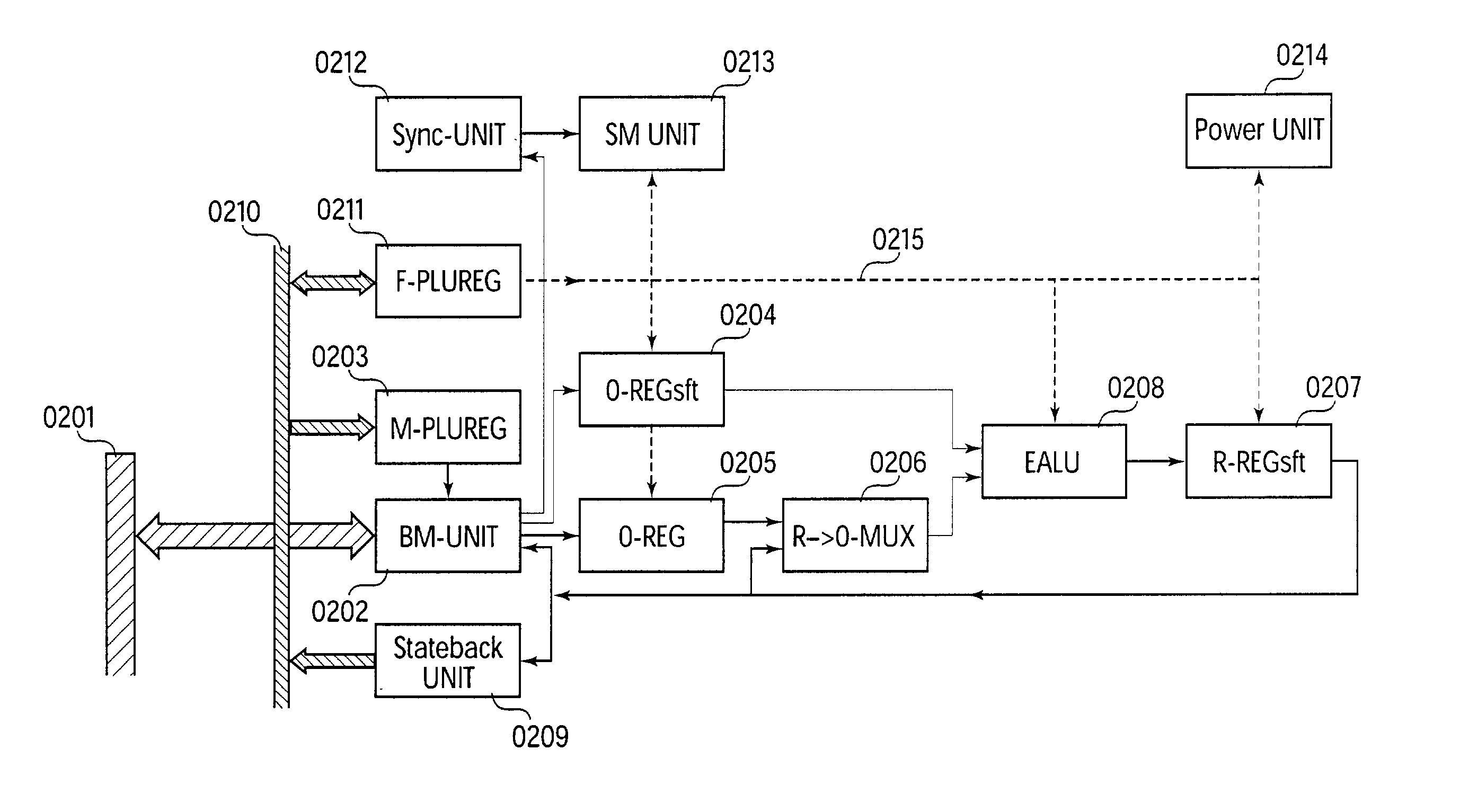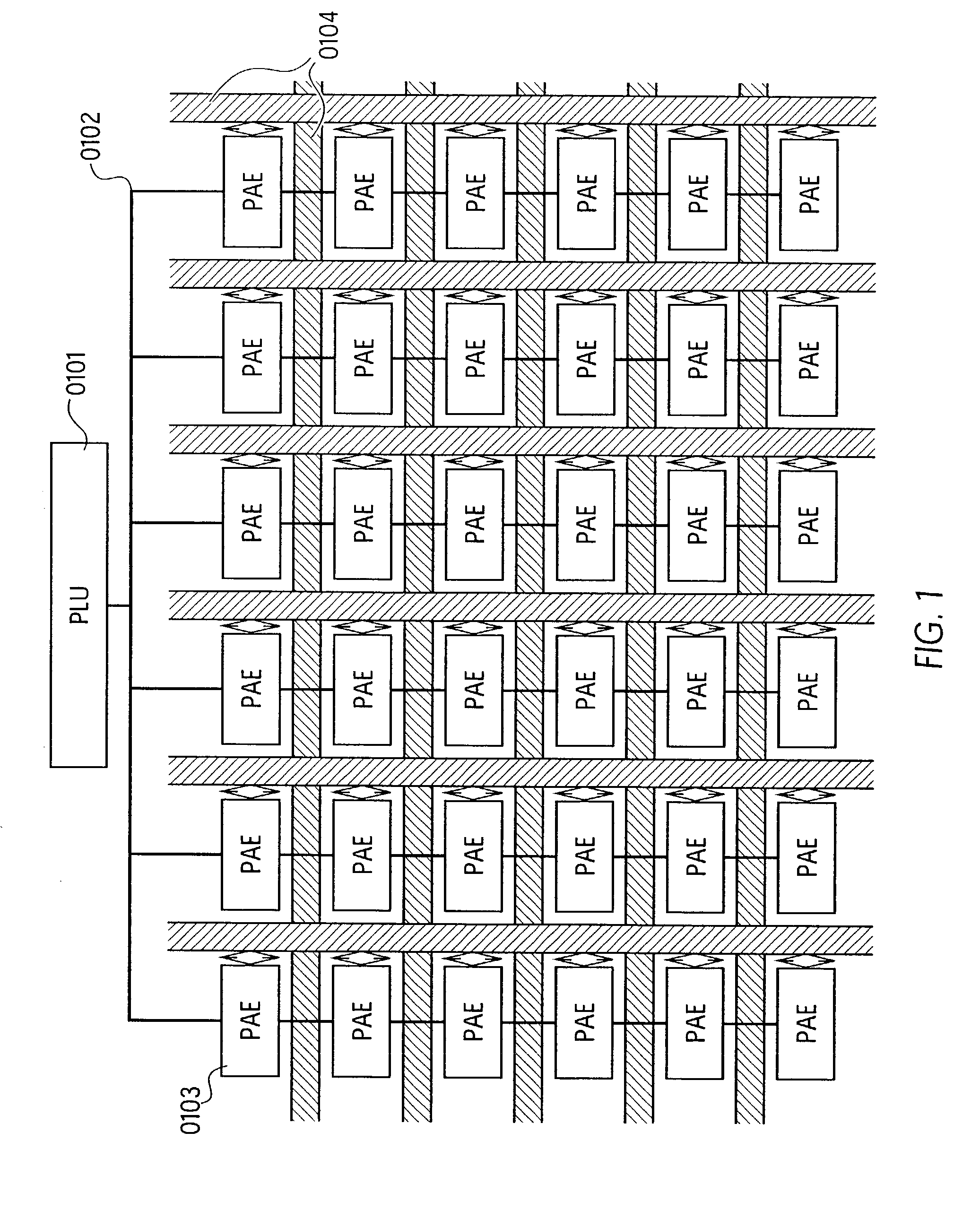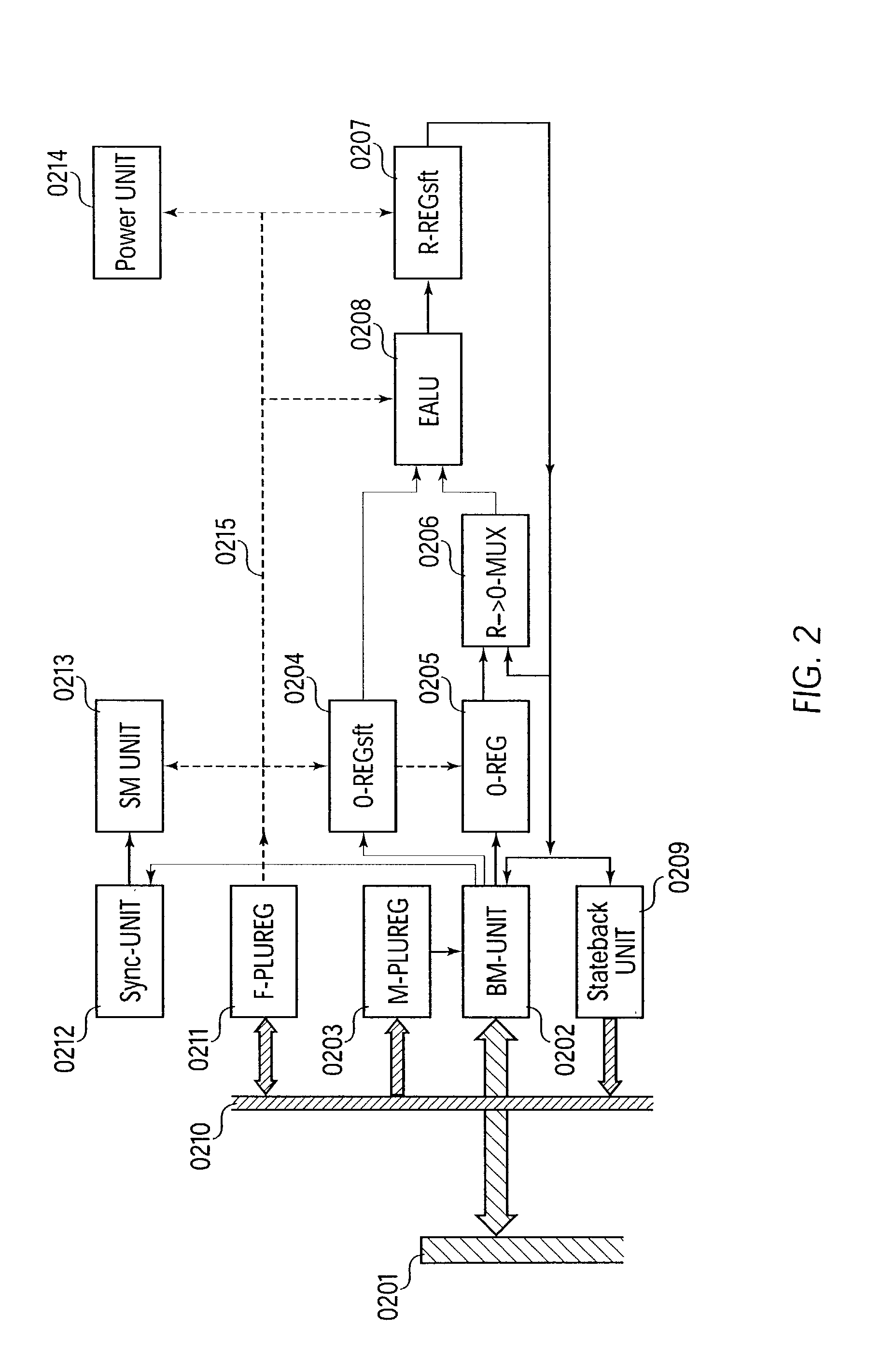Unit for processing numeric and logic operations for use in central processing units (CPUS), multiprocessor systems, data-flow processors (DSPS), systolic processors and field programmable gate arrays (FPGAS)
a logic operation and central processing unit technology, applied in the field of central processing units, can solve the problems of complex configuration of units according, 881 a1, vpus, etc., and achieve the effect of reducing the volume of data required for configuration
- Summary
- Abstract
- Description
- Claims
- Application Information
AI Technical Summary
Benefits of technology
Problems solved by technology
Method used
Image
Examples
Embodiment Construction
[0014] 2.1. Overview of the Invention, Abstract
[0015] The invention describes the architecture of a cell in the sense of German Patent DE 44 16 881 A1 or known FPGA cells. An expanded arithmetic and logic unit (EALU) with special extra functions is integrated into this cell to perform the data processing. The EALU is configured by a function register, which greatly reduces the volume of data required for configuration. The cell can be cascaded freely over a bus system, the EALU being decoupled from the bus system over input and output registers. The output registers are connected to the input of the EALU to permit serial operations. A bus control unit is responsible for the connection to the bus, which it connects according to the bus register. The unit is designed so that distribution of data to multiple receivers (broadcasting) is possible. A synchronization circuit controls the data exchange between multiple cells over the bus system. The EALU, the synchronization circuit, the bu...
PUM
| Property | Measurement | Unit |
|---|---|---|
| area | aaaaa | aaaaa |
| volume | aaaaa | aaaaa |
| power loss | aaaaa | aaaaa |
Abstract
Description
Claims
Application Information
 Login to View More
Login to View More - R&D
- Intellectual Property
- Life Sciences
- Materials
- Tech Scout
- Unparalleled Data Quality
- Higher Quality Content
- 60% Fewer Hallucinations
Browse by: Latest US Patents, China's latest patents, Technical Efficacy Thesaurus, Application Domain, Technology Topic, Popular Technical Reports.
© 2025 PatSnap. All rights reserved.Legal|Privacy policy|Modern Slavery Act Transparency Statement|Sitemap|About US| Contact US: help@patsnap.com



